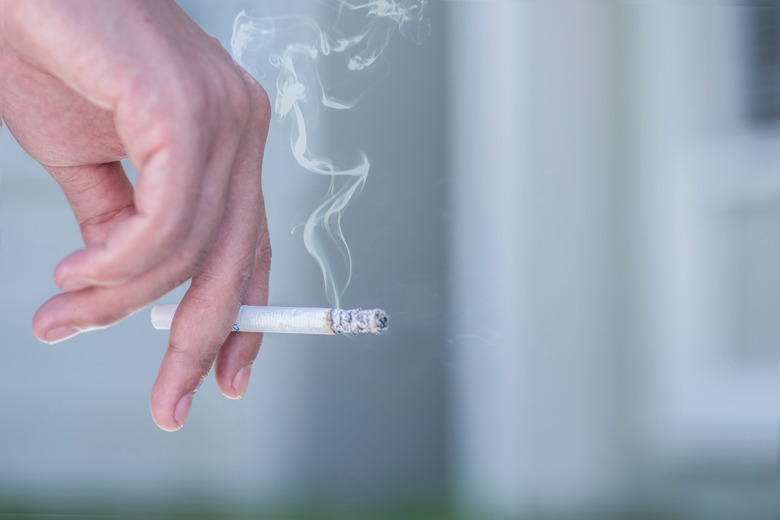How To Get Nicotine Stains Off Wood Paneling
Whether you're a smoker or a past resident of your house was a smoker, nicotine stains can linger and really bring down the appearance of a room. Luckily, there are a few different ways to remove nicotine stains from a wood-panel room. It all depends on how the wood has been previously treated. You can also help with future nicotine stains on wood paneling by sealing or varnishing wood.
What Are Nicotine Stains?
What Are Nicotine Stains?
Nicotine is the addictive chemical found in cigarettes. When someone continually smokes indoors, the nicotine can form brown, greasy stains on the walls and ceiling. Nicotine gets absorbed into almost every surface with which it comes in contact. Nicotine stains on wood are particularly difficult to remove, so a wood-panel office, for example, can build up very visible stains over time. The best way to stop nicotine staining is by not smoking inside your home. However, if the stains are already there, there are certain methods that can help remove them.
How to Get Nicotine Stains off Finished Wood
How to Get Nicotine Stains off Finished Wood
Finished wood refers to any wood paneling that has been treated with a stain such as glaze, varnish or paint. Removing nicotine stains from finished wood tends to be easier than untreated wood because the layer of treatment acts as a protectant and stops the nicotine from deeply permeating into the wood.
You can make a wood-cleaning mixture from household ingredients. First, fill a large bucket or washing bowl about halfway with warm water. Add one cup of white vinegar and half a cup of baking soda. The vinegar and baking soda will react with each other to produce a foaming mixture. This helps the mixture cut through the grease, but it will not harm the surface of the wood. Apply this mixture to the wood paneling using a soft-bristled brush. Never scrub with a Brillo pad or steel wool, as this will scratch the wood's surface. Apply in the direction of the wood grain to prevent any other damage.
After scrubbing, wipe the mixture away. You should see that the mixture has turned a brownish color; this is the nicotine stain lifting. As you scrub, the mixture in your bucket will take on a dirty tinge. When this happens, pour it out and make a fresh batch. Keep repeating this process, particularly if the stains are very old and deeply set.
Once your mixture is no longer becoming tinged with brown, you'll know you've removed the stains. You can then remove all your mixture and give your walls a final rinse. This should be done with a clean sponge and some plain, warm water. After you've finished, open windows in the room to speed up drying time, minimize odors and allow fresh air to circulate.
How to Get Nicotine Stains off Bare Wood
How to Get Nicotine Stains off Bare Wood
Removing nicotine stains from untreated wood is both easier and more difficult. You don't need to worry about damaging the wood's finish, but the stain will likely have penetrated the wood more deeply.
The best way to remove nicotine stains from bare wood is by using some sort of grease-cutting cleanser. Dish soap is a fantastic option that you likely already have on hand. Make a fairly potent mixture of dish soap and water and apply to your wood with a soft-bristled scrubbing brush. Again, you'll start to see the nicotine lifting from the wood and turning the foam of your dish soap a murky brown shade. Repeat the process until the foam is no longer turning brown, and then rinse the wood thoroughly with clean, warm water. Allow the wood to dry with the windows of the room open.
Sealing Wood to Protect From Nicotine Stains
Sealing Wood to Protect From Nicotine Stains
If your wood is untreated, it may be a good idea to seal it to prevent future nicotine stains and other stains. A shellac-based sealant is the most protective option. You can apply shellac using a brush or a pad. Once it's dry, it's recommended that you sand it down and apply at least a second layer for maximum protection.
